By its very nature, competition in sports pushes athletes to better themselves, work harder than the opposition, and gain an edge over their opponents however they can. That is what defines great competition, and it is the reason sports compression socks were developed.
These socks are quickly becoming popular among athletes across countless different sports, irrespective of age, ability, or level of play, simply because they help boost athletic performance and shorten recovery times by improving blood circulation.
Sports enthusiasts and all manner of athletes use sports compression socks to improve their athletic performance and endurance and break personal records in the process.
The Basics
Compression socks are therapeutic socks that are worn to support the lymphatic and venous systems of the legs. The graduated compression provided by the socks means that they are tighter at the ankles and loosen up as they extend to below or above the knees.
Depending on what you need them for, you can wear sports compression socks on either one leg or on both of your legs, and you can choose socks with the pressure and compression level that you find most comfortable and beneficial.
Compression socks are an excellent remedy for treating venous disorders such as chronic venous insufficiency, lymphedema, post phlebitis syndrome, and varicose veins.
They help blood circulate back to your heart from the legs, thereby reducing swelling in your lower limbs and preventing the formation of blood clots in the feet and legs. Beyond athletes, post-operative patients can also wear compression socks to prevent blood clots forming after surgery.
Pregnant women are also known to benefit from wearing such socks to alleviate the stress that their venous systems undergo during pregnancy. Compression socks are also recommended for travelers who spend hours on end in a stationary position (such as on a long flight) and those who spend a lot of their time on their feet (such as mail delivery or warehouse personnel).
Regardless of your purpose for wearing compression socks and their clear benefits for sportspeople, sports compression socks do take some getting used to.
For certain individuals such as the elderly, the disabled, or those who are obese, these socks can be quite difficult to put on. Under such circumstances, you can use a stocking aid called a Dorking.
A Dorking is a device that is used to help users wear their socks as seen below.
Why Wear Sports Compression Socks?
Sports compression socks are not your regular knee-high tube socks. They are made with firm elastic fiber to give you compression where you need it most.
Although there isn’t much evidence that supports wearing compression socks for enhanced sports performance, don’t ditch your sports compression socks just yet! What is medically proven is that these socks can help you avoid muscle soreness, especially after participating in strenuous activities.
Some sports such as soccer and basketball are very demanding and can cause muscle damage and fatigue, both of which can negatively affect match performance significantly.
Compression socks can help prevent or limit this damage, so in that sense, they can be considered to be performance enhancers. If you wear compression socks, you will enjoy improved blood circulation in the longer run, and improved comfort and fresher legs immediately, during and after use.
Popular Articles on ComproGear
Best Compression Socks for Sitting All Day Compression Socks for Office Workers
The Effects of Sports Compression Socks on Performance
Compression socks were originally designed to relieve the legs of exhaustion and swelling, as well as treat different medical conditions such as phlebitis, varicose veins, and edema because they enhance the flow of blood by ensuring that the circulatory system returns blood to the heart from the lower extremities.
However, when it comes to athletes, the faster the delivery of oxygen to the muscle cells, especially in the legs, can lead to greater athletic endurance.
It is also believed that these socks can help manage the temperature of the muscles while they are being exerted so that they remain warm, thereby helping sportspeople prevent stiffness and swelling, before, during, and after games or matches.
Thanks to the high-tech materials and design of advanced compression socks, sportsmen and women can enjoy increased performance and better muscle function.
In addition to benefits related to circulation and temperature, compression socks help to reduce vibrations, thereby improving muscle efficiency and mechanics. The lactic acid that is produced in the muscles in the absence of oxygen will also be flushed out more quickly to improve oxygenation in the muscles of the legs, not to mention quicker healing and faster recovery.
Tight-fitting sports compression socks act as a protective layer on the legs, improve the agility and muscular endurance of the lower limbs, and can help keep you fresher, more relaxed, and warmed up for longer.
They also help increase calf muscle endurance and recovery, especially for athletes who participate in sports and activities that involve multiple changes of direction as well as constant acceleration and deceleration.
The Effects of Sports Compression Socks on Recovery
You can wear your compression socks for a couple of hours after the activity, or during an activity itself. This can be done to reduce any soreness or swelling in your feet, ankles, or lower legs.
The oxygen level of your body may drop during strenuous exercise and can lead to the formation of lactic acid as your body breaks down carbs for energy.
It is important to use medical-grade sports compression socks so that your socks can apply pressure deeply to your veins and help flush out the lactic acid in the muscles and veins.
By so doing, blood containing lactic acid can be recirculated back to the heart for re-oxygenation instead of sitting in your muscles, potentially causing cramps.
This is how medical-grade sports compression socks help you recover more quickly from sporting activities.
How Sports Compression Socks Prevent Sport Injuries
The muscles in your body are grouped based on their function. Sports injuries are common, and many people who suffer sports injuries are affected by injuries because of how they use their legs for their sport.
Recent studies found that sports compression socks can affect the function of the muscles during exercise by helping with oxygenation. They help increase tissue oxygenation and also reduce venous pooling.
These socks help to reduce the level of muscle damage markers such as serum creatine kinase after every exercise.
Studies have also shown that the use of compression socks reduces swelling, reduces perceived muscle soreness, and quickens recovery.
In sports such as soccer, the ankles are placed under extreme stress, turning and pivoting time and again in different directions under the weight of the player.
Compression socks can provide such players with the support they need to prevent and also treat ankle injuries.
These socks provide compression around the ankle joint to improve the stability and durability of the joints, even under stress.
How Sports Compression Socks Help Athletes
Sports, especially athletics, can keep you very fit and healthy. However, sports can lead to aches and sores in the feet and legs. There are many benefits you can enjoy by incorporating compression socks in your normal daily routine.
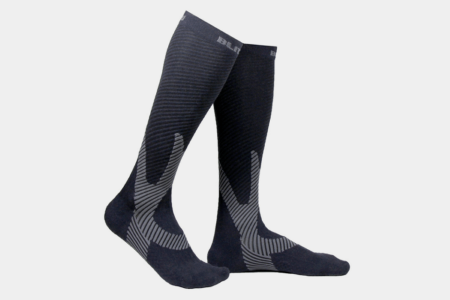
When it comes to sports that put you at risk of suffering an injury, you need to be as prepared as possible, and this is where sports compression socks come in.
Here are some of the many ways that sports compression socks can help athletes.
They can make you a better athlete
Sports compression socks help set you apart from your competitors. These socks help to increase proprioceptive feedback and they facilitate muscle contraction to enable you to sprint faster and jump higher. Furthermore, they absorb shock so you do not easily feel fatigued or experience muscle, bone, or ligament damage.
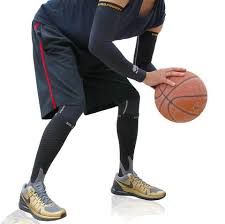
Compression socks have been proven to be effective in endurance races by making sure the runner’s muscles are kept compact, with reduced tendon traction.
In this way, you will be less likely to suffer
shin splints,
tendonitis, and other muscular injuries.
In addition, in order to make you a better athlete, sports compression socks improve muscle oxygenation and accelerate the elimination of blood lactate so that your body recovers more quickly after your exercise.
Reduce pain associated with strenuous exercise
Studies have shown that wearing compression socks after you exercise will give your legs the time they need to recuperate optimally.
These socks, especially if you use full-leg compression socks, will save your legs from pain by giving your muscles the support they need to make you feel mobile, lighter, and ready to play again soon after finishing one round of activity.
Compression socks enhance workouts
Wearing compression socks will allow you to feel performance sensations the moment they occur. During your sports activity, these socks help to reduce pain and the risk of injury while quickening recovery times.

These facts help you to improve your daily performance and be ready to perform faster and better than you would have been able to without compression socks.
They enhance your endurance and performance
During endurance exercises such as marathons and trail running, your muscles are at the risk of suffering damaged or becoming fatigued as a result of repeated shocks.
Using compression socks will help you to reduce these vibrations and absorb the shocks of running and you will experience not only delayed fatigue and reduced pain but few to no injuries.
As a result, you will perform longer, better, and be more resistant to fatigue, muscle exhaustion, and body deterioration than your competitors when participating in endurance sports.
Reduction in blood lactate concentrations
Your muscles are always at the risk of sustaining damage from strenuous athletic activity. This has a negative impact on your blood circulation because your body produces lactic acid and other toxins when circulation is impaired, and this increases the concentration of these toxins in your muscles.
The resultant effect is an impairment of recovery which may hinder your performance, and this is why improved blood flow and circulation are needed and is why sports compression socks are an important item to wear whenever you participate in sports or other physical activities.
Using sports compression socks can help to gently press the veins of the legs, and this activates venous return from the feet to the heart.
The benefits of this are increased oxygen levels in your muscles, quicker elimination of lactic acid and other toxins in the lower limbs, and faster recovery, all of which will enable you to play again without limping or experiencing fatigue.
How Long Should Compression Socks Be Worn to Boost Recovery?
Wearing compression socks during and after your sports activities can help prevent your feet and legs from becoming sore and achy. If you want to enjoy all of the benefits of these garments, you should know how long to wear them. The ideal duration varies from person to person.
Contrary to what some people believe, wearing sports compression socks for a long period of time is not dangerous.
If you are obeying doctor’s orders, you may even have to wear them all day and only take them off at night so that your legs can relax a little without compression.
After engaging in athletics, you need sports compression socks to keep your blood flow higher and provide your cells and muscles with all they need to recover quickly.
Athletes are advised to wear compression socks when they are undergoing long or difficult sessions, and they should continue to wear them for the next 24 hours to recover faster and prevent muscle damage.
Wearing your compression socks on easy workout days may not be necessary as your muscles are not under so much stress that they cannot recover well enough on their own.
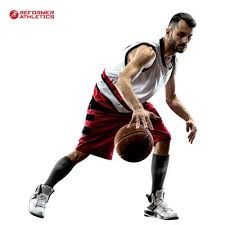
The most important factors to consider when deciding on how long you should wear the socks are your natural ability to recover quickly, how tired your feet and legs are, and the effectiveness of the socks. More often than not, you will need to wear your socks for just a couple of hours to keep you feeling fresh and mobile the following day.
Getting the Most Out of Your Sports Compression Socks
In most cases, sports compression socks are made using the latest technology and the highest-quality materials. This is why a quality pair does not come cheap. Therefore, it is important you make sure you get the most out of your compression socks.
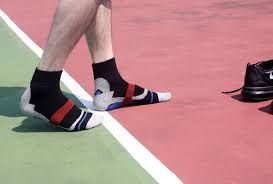
Get compression socks with graduated compression
For athletes, the level of compression you should go for should be 8 to 15 or 15 to 20mmHg. Your doctor can help you decide which pressure level is best for you.
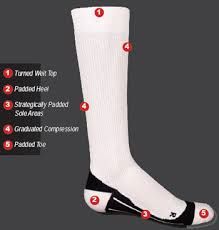
Ensure you get the perfect fit
Having the perfect fit will give you the results you need. Measure your feet and legs, preferably as soon as you get out of bed, to ensure an accurate fit.
Taking your measurements is really easy. All you need is a measuring tape. You can also use a string or thread, mark the length of your foot or leg, and lay it across a ruler to get the measurement you need.
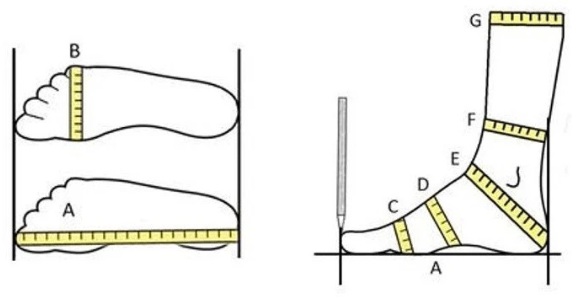
Here are the steps to take:
- Pinpoint the largest point of your calf circumference and measure it.
- To get the length of the socks, use the measurement of your standard shoe size.
Please note that your socks should be snug, but not too tight. Having the right measurement at the largest circumference of your calf will help keep your socks in place and will ensure they do not stop blood circulation by being too tight.
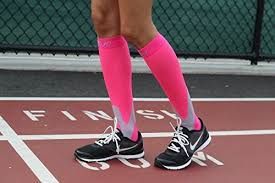
Must-Have Features of Sports Compression Socks
Sports compression socks are often specially made to meet the needs of people engaging in endurance sports. These socks help boost the regeneration of the leg muscles by exerting compression according to medical standards. There are a number of features to look for when choosing your sports compression socks.
Some of the must-have features of sports compression socks are:
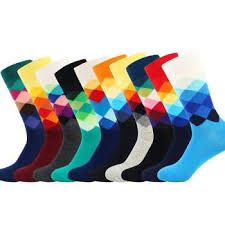
- The fabric should be highly elastic and knitted.
- The level of compression of the socks should be carefully regulated.
- It should be in line with medical standards.
- There should be soft padding in the sock, mostly in the sole and instep areas of the foot to increase comfort during movement.
- There should be a protection zone to reduce pressure and friction on your Achilles tendon.
- The fabric should be breathable. More expensive options have high-tech microfibers that are breathable and feel great on the skin.
- The material should be durable and resilient to the wear and tear of high-end sports activity.
Conclusion
For years, doctors have used compression socks to treat medical conditions of various types involving the lower legs. These conditions range from swelling in the ankles to the prevention of life-threatening blood clots.
In more recent times, athletes, trainers, and sports enthusiasts have learned to use compression therapy to improve their performance and recovery.
Irrespective of whether you are a casual jogger, an elite footballer, or someone in between, sports compression socks can help provide you with the boost you need for your work-out routine.
There is absolutely no reason to compromise your health while doing something you love when you can prevent injuries with compression socks.
